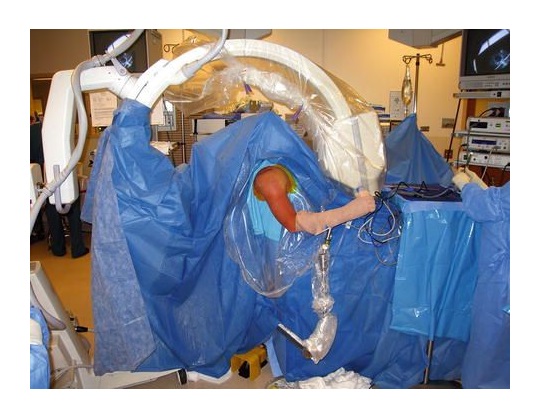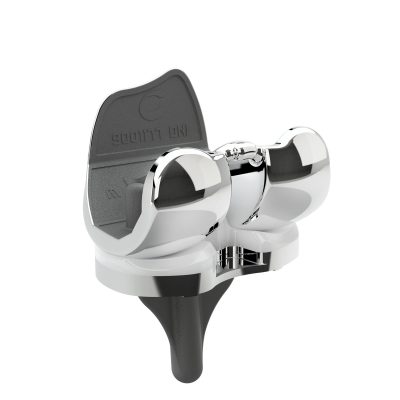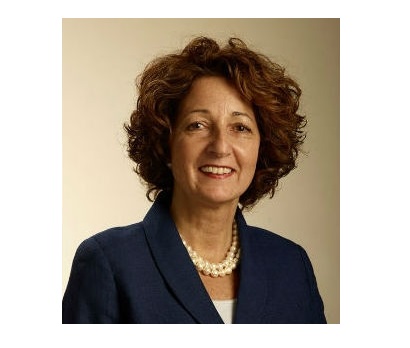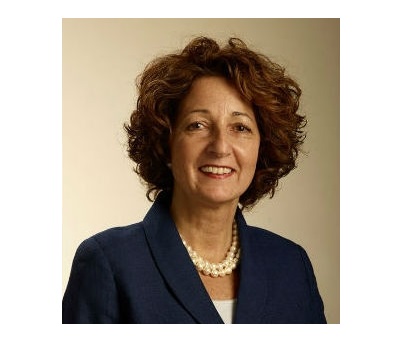ROSEMONT, Ill., Nov. 16, 2018 /PRNewswire/ — A new review article published in the Journal of the American Academy of Orthopaedic Surgeons (JAAOS) finds arthroscopic (joint replacement or reconstruction) management could be a promising option for young, active patients diagnosed with GHOA.
Primary glenohumeral osteoarthritis (GHOA) is a common type of painful and debilitating shoulder osteoarthritis (OA). Shoulder OA leads to upper body dysfunction in over 20 million Americans. People with GHOA may have trouble throwing, swimming and lifting their arms to do everyday tasks. They often have pain centered in the back of their shoulder. As it progresses, shoulder arthritis pain may interrupt sleep. This condition can be especially frustrating for younger, active patients.
“Total shoulder replacement is not ideal for young, high-demand patients with GHOA,” explains Peter J. Millett, MD, lead author of the study and orthopaedic surgeon at the Steadman Clinic. “Instead patients under 50 years old or select active patients up to age 65 with advanced GHOA who haven’t experienced adequate relief from nonsurgical treatment may experience the greatest benefit from arthroscopic management.”
Over the last 15 years, Dr. Millett has been working on an arthroscopic approach to treat GHOA that preserves the shoulder joint, decreases pain and improves function. This approach, the Comprehensive Arthroscopic Management (CAM) procedure, is also now being successfully utilized by other orthopaedic shoulder specialists for some patients to treat shoulder osteoarthritis.
Outcomes for patients with advanced symptomatic GHOA who underwent CAM procedures include:
- Significantly improved ability to complete daily activities and reduced pain and instability as reported by both patients and doctors (known as the American Shoulder and Elbow Surgeons Shoulder Score (ASES));
- Significant rates of preventing total shoulder arthroplasty (TSA) at one, two, three and five years following CAM procedures; and,
- Median patient satisfaction rate of nine out of 10 five years after CAM procedures among patients who did not need TSA.
Osteoarthritis is the most frequent cause of disability in the United States. Cartilage breaks down, and the body’s healing process can ruin the smooth joint surfaces needed for typical movement. Related inflammation also limits motion. Doctors have multiple surgical and non-surgical treatment options for osteoarthritis. Physical therapy, home exercise, cortisone injections, and anti-inflammatory medications such as ibuprofen may offer relief for osteoarthritis, but the scientific literature supporting these approaches is limited. Despite this, Dr. Millet notes that most doctors will try one or more of these methods before suggesting surgery.
If nonsurgical efforts fail, removing damaged cartilage or bone (debridement) or arthroplasty are potential next steps. However, each of these approaches have potential downsides, including long recovery times, surgical risks and acceleration of the arthritis with more pain, stiffness and dysfunction. With arthroplasty, additional risks related to the artificial joint may include pain, dysfunction and wearing out of implants over time.
In search of a solution to address these shortcomings, orthopaedic surgeons have identified new combinations of treatments that preserve joints and delay or avoid arthroplasty. Dr. Millet and his colleagues combined new and existing procedures to treat this specific arthritis.
“The CAM procedure is a minimally invasive surgery that removes mechanical irritants from the joint, reshapes the humerus to make it round again and also to decrease any impingement on the adjacent nerves,” says Dr. Millett. “The overall goal is to achieve a synergistic benefit with pain relief and functional restoration, without burning bridges for future surgeries, all while delaying joint replacement or perhaps even avoiding it altogether.”
Advantages of arthroscopic management as compared to total shoulder arthroplasty include delaying or avoiding arthroplasty, preserving the joint, and preserving future treatment options. Disadvantages of CAM include that the procedures are technically demanding, long-term outcomes remain unknown, and that there is no guarantee a patient will not need arthroplasty in the future.
“The human and economic costs of shoulder arthritis are substantial and conventional treatment has significant shortcomings. This new, more tailored approach is potentially good news for GHOA sufferers. “Long-term data of patients who have undergone the CAM procedure show promising, but not perfect, results,” Dr. Millett concludes.
The full study is available at: https://bit.ly/2DdneyI
More information about arthritis of the shoulder is at OrthoInfo
More information about the AAOS and JAAOS
Follow the AAOS on Facebook, Twitter and Instagram
Follow the conversation about JAAOS on Twitter
Disclosures
From the Steadman Philippon Research Institute (Dr. Millett and Dr. Fritz), and the Steadman Clinic, Steadman Philippon Research Institute (Dr. Frangiamore and Dr. Mannava), Vail, CO. Dr. Millett or an immediate family member has received royalties from Arthrex and MedBridge; serves as a paid consultant to Arthrex; has stock or stock options held in Game Ready and VuMedi; and has received research or institutional support from Arthrex, Össur, Siemens, and Smith & Nephew. Dr. Fritz or an immediate family member has received research or institutional support from Arthrex, Össur, Smith & Nephew, and Vail Valley Medical Center. Dr. Mannava or an immediate family member serves as a board member, owner, officer, or committee member of the Arthroscopy Association of North America. Neither Dr. Frangiamore nor any immediate family member has received anything of value from or has stock or stock options held in a commercial company or institution related directly or indirectly to the subject of this article. JAAOS – Journal of the American Academy of Orthopaedic Surgeons: November 1, 2018 – Volume 26 – Issue 21 – p 745–752
doi: 10.5435/JAAOS-D-17-00214
SOURCE American Academy of Orthopaedic Surgeons





